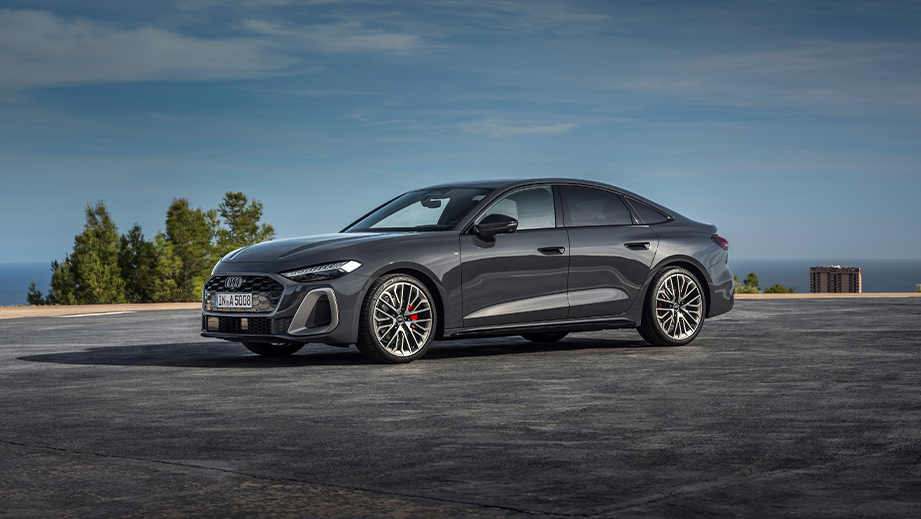
All prices are ex showroom*
The influencers' perspective
Tata Harrier images
Tata Harrier colours

Tata Harrier specifications
sales spotlight: Harrier cruises into top ranks
Discover this standout car, currently ranked 30 on the CARS24 sales Leaderboard. With monthly sales of 1259 units, Harrier continues to impress with its combination of style and performance.
Caught in the act - Up close

Latest News & Updates
View MoreTata Harrier Price in India
The Tata Harrier price in India ranges between ₹15 lakh to ₹25.90 lakh (approx ex-showroom), depending on the variant. The Tata Harrier on-road price varies across different cities due to variations in RTO charges, insurance, and other taxes. Buyers can expect higher on-road prices in cities like Mumbai and Bengaluru, compared to other cities like New Delhi and Jaipur. The Harrier continues to be a popular choice in the mid-size SUV segment, offering a modern design, premium features, and a powerful diesel engine. It’s even high on safety with a 5-star rating from NCAP.
Tata Harrier On Road Price
The Tata Harrier diesel price in India ranges from ₹15 lakh to ₹25.90 lakh (ex-showroom). The Tata Harrier on-road price in Delhi varies between ₹17.5 lakh to ₹30 lakh, depending on the variant and additional charges. Powered by a 2.0L turbo diesel engine, it offers a strong performance with manual and automatic transmission options. The Harrier’s rugged build, premium features, and spacious cabin make it a compelling choice in the SUV segment. With its bold styling and advanced safety features, it remains a top contender among diesel SUVs in India.
Tata Harrier Mileage
The Tata Harrier mileage stands at 16.8 kmpl for both manual and automatic variants, as per ARAI testing. This ensures a balanced mix of power and fuel efficiency, making it a practical choice for long drives. The Tata Harrier automatic mileage remains the same as its manual counterpart, offering convenience without compromising efficiency. Its 2.0L turbo diesel engine delivers a strong performance while maintaining decent fuel economy. With its SUV stance and fuel-efficient nature, the Harrier remains a competitive option in its segment.
Tata Harrier Specs
The Tata Harrier specs include a 1956 cc diesel engine, paired with 6-speed manual and automatic transmission options. It generates 170 PS of power and 350 Nm of torque, which ensures a pretty strong performance. The SUV delivers an ARAI-certified mileage of 16.8 kmpl, making it reasonably fuel-efficient for its segment. Designed as a 5-seater, the Harrier boasts dimensions of 4605 mm in length, 1922 mm in width, and has a 2741 mm wheelbase. Its ground clearance stands at 205 mm. The SUV has a boot space of 445-litres.
Tata Harrier Key Features
The Tata Harrier features a modern design, powerful Diesel engine, and tonnes of equipment. It comes with a 10.25-inch touchscreen infotainment system with Android Auto and Apple CarPlay, a fully digital instrument cluster, panoramic sunroof, wireless smartphone charger, ventilated seats, 6-way powered driver's seat and 4-way powered co-driver's seat, Multi-color ambient lighting, Gesture-enabled powered tailgate, Air purifier, Rain-sensing wipers, Automatic headlamps, Keyless entry and Rear parking sensors.
Tata Harrier Key Safety Features
Safety is a highlight of the Harrier with the SUV scoring a full 5 stars a NCAP. Its safety suite includes as many as six airbags, Electronic Stability Program (ESP), auto headlamps, rain-sensing wipers, and height-adjustable seatbelts. Advanced safety features include ADAS features like lane departure warning and autonomous emergency braking. Additionally, the SUV gets hill hold control, hill descent control, and a 360-degree camera with parking sensors.
Tata Harrier Pros and Cons
| Pros | Cons |
| Bold and muscular design | No petrol engine option |
| Spacious cabin with premium features like panoramic sunroof | No AWD/4x4 option |
| 5-star Global NCAP safety rating with ADAS features | Fuel efficiency could be better |
Tata Harrier Rivals
The Tata Harrier competes with SUVs like the Mahindra XUV700, MG Hector, and Hyundai Creta. Compared to the XUV700, the Harrier lacks a petrol engine and AWD. The MG Hector provides a more tech-loaded cabin and a larger touchscreen, but the Harrier has better driving dynamics. The Hyundai Creta, though more affordable, is smaller and less powerful than the Harrier. The 5-star safety rating is another advantage the Harrier enjoys over rivals like MG Hector and Hyundai Creta.
The Tata Harrier competes with the following SUVs in the Indian market. You can click on the links mentioned below to check out a one-to-one comparison between the Harrier and its rivals.
Tata Harrier vs Mahindra XUV 700
Tata Harrier vs Mahindra Scorpio n
Tata Harrier vs Toyota Innova Crysta
Tata Harrier vs Maruti Grand Vitara
Tata Harrier vs Hyundai Alcazar
Tata Harrier user reviews
Interiors
Looks
Fuel Economy
Comfort
Auto Enthusiast
Piyush Patel
Auto Enthusiast
Similar cars
Popular cars from Tata
Compare Tata Harrier with rivals
Or add another car to compare with
























































.webp)













































































































